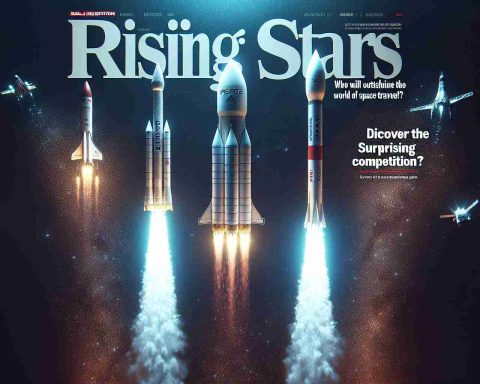## Insights into Australia’s Satellite Internet Services
A recent report from the Australian Competition and Consumer Commission (ACCC) has revealed alarming performance issues with the National Broadband Network’s (NBN) satellite internet services. Many users face severe difficulties with everyday online activities, such as streaming and gaming, due to staggering latency rates that average approximately 664.9 milliseconds.
In a stark contrast, Starlink, developed by SpaceX and utilizing low-Earth orbit (LEO) satellites, achieves an impressive latency of just 29.8 milliseconds. This significant difference raises concerns over the government’s earlier decision to invest heavily in geostationary satellite technology, which now seems outdated.
The numbers tell a clear story: while Starlink boasts peak download speeds of 470 Mbps and upload speeds of 74 Mbps, NBN lags behind with a maximum of only 111 Mbps for downloads and 22 Mbps for uploads. The science behind this disparity lies in the lower operational altitude of LEO satellites, which enhances data transmission.
The ACCC’s analysis, based on detailed data from nearly 300 connections, highlights pressing issues for users in rural areas—particularly as effective connectivity becomes increasingly crucial for tasks requiring real-time interaction. As the satellite internet landscape shifts from traditional models to more innovative approaches, consumers are left contemplating their options between consistent yet limited services and faster, more agile alternatives. The findings from the report clearly signal an urgent need for evolution in satellite internet technology and infrastructure.
Australia’s Satellite Internet Showdown: Is Starlink the Future?
## Insights into Australia’s Satellite Internet Services
A recent report released by the Australian Competition and Consumer Commission (ACCC) reveals significant performance issues with the National Broadband Network’s (NBN) satellite internet services. Many Australians are finding it challenging to perform everyday online activities, such as streaming and gaming, due to latency rates that average an alarming 664.9 milliseconds.
Satellite Technology Comparison
In stark contrast, Starlink, the satellite internet service developed by SpaceX, is setting new benchmarks with its advanced low-Earth orbit (LEO) satellite network. Starlink achieves impressive latency rates of approximately 29.8 milliseconds. This disparity in performance underscores the concerns surrounding the Australian government’s substantial investment in traditional geostationary satellite technology, which appears increasingly outdated as user demands grow.
Performance Metrics
Current statistics highlight a significant gap between the two services. Starlink reports peak download speeds reaching up to 470 Mbps, with upload speeds averaging 74 Mbps. In comparison, NBN’s maximum download speed caps at 111 Mbps, with upload speeds reaching only 22 Mbps. The substantial differences in these figures can be attributed to the operational altitude of LEO satellites, which allows for enhanced data transmission capabilities.
Trends in Satellite Internet
As satellite internet technology evolves, the focus is shifting towards LEO satellites, which provide faster and more reliable connections. This evolution is critical, especially for consumers residing in rural areas where effective connectivity is essential for tasks requiring real-time interaction.
Pros and Cons of Satellite Internet Services:
# Pros:
– Starlink:
– Low latency (29.8 ms), ideal for real-time applications.
– High-speed potential (up to 470 Mbps).
– Rapid deployment and availability in underserved areas.
– NBN:
– Established infrastructure, though reliant on outdated technology.
– Adequate speed for basic tasks such as browsing and email.
# Cons:
– Starlink:
– Higher installation costs compared to traditional services.
– Potential signal interruptions due to obstructions or weather conditions.
– NBN:
– High latency (664.9 ms) affecting gaming and video conferencing.
– Limited speeds may hinder more demanding online activities.
Use Cases for Starlink and NBN Services
– Starlink is particularly suited for remote work situations, gaming, video conferencing, and streaming where low latency and high speed are crucial.
– NBN might be adequate for users who primarily need internet access for browsing or email but struggle with latency-related tasks.
Limitations and Future Predictions
As the demand for high-speed internet continues to climb, the limitations of traditional satellite services will likely drive more consumers toward innovative solutions like Starlink. The ACCC’s report signals an urgent need for advancements in satellite internet technology to keep pace with user expectations and global standards.
Conclusion
With the current shifts in satellite internet technology, consumers must weigh their options carefully. The performance gap between Starlink and NBN highlights the evolution of connectivity services and the pressing need for improvement to meet the demands of modern users.
For more insights about internet services in Australia, visit [ACCC](https://www.accc.gov.au).



















